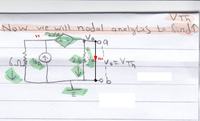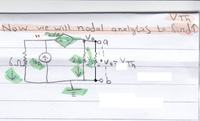PG1995
Full Member level 5

Hi 
Please have a see on the following link: https://img339.imageshack.us/img339/3438/imgmw.jpg
You also see my question there. There would be potential drop for Vo. I have also read that when the loop is traversed in the direction of loop current, then the IR term is subtracted; if the loop is traversed in the direction opposite to the direction of current, then IR term is added. Please help me. Thanks.
Please have a see on the following link: https://img339.imageshack.us/img339/3438/imgmw.jpg
You also see my question there. There would be potential drop for Vo. I have also read that when the loop is traversed in the direction of loop current, then the IR term is subtracted; if the loop is traversed in the direction opposite to the direction of current, then IR term is added. Please help me. Thanks.








